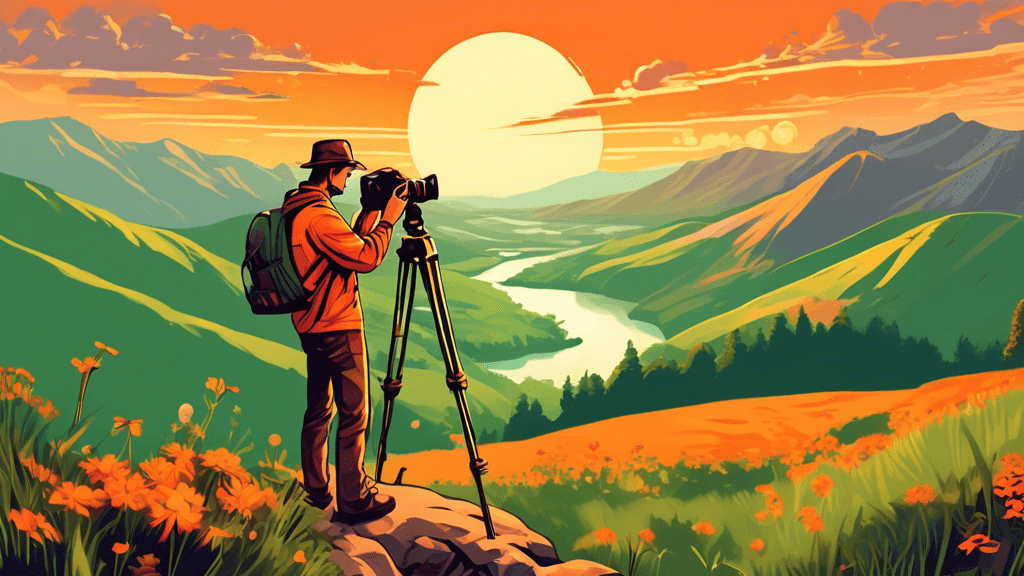
Essential Tips for Beginner Landscape Photographers
Share
Introduction to Landscape Photography
Landscape photography can be one of the most satisfying forms of photography, allowing you to connect with the natural world while documenting its vast, inexhaustible beauty. Whether you're standing before rolling hills, serene beaches, or rugged mountain ranges, capturing these scenes requires not just technical skills but also a deep appreciation of nature. This guide is designed for beginners eager to explore the thrilling world of landscape photography while respecting and conserving our environment.
Understanding the Basics of Landscape Photography
Before you venture out with your camera, it’s essential to grasp some fundamental concepts and techniques that form the foundation of landscape photography. From understanding light to choosing the right equipment, these basic elements can immensely impact the quality of your photos.
1. Comprehending Light and Time of Day
The quality of light significantly affects the mood and aesthetic of your landscape shots. Golden hours, the hour after sunrise and before sunset, often provide soft, warm light that enhances textures and colors in the landscape. On the other hand, the blue hour—just before sunrise and after sunset—offers a cooler tone that can bring a mysterious or tranquil feel to your photographs. Knowing how to use these different types of light can immensely benefit your photography.
2. Choosing Your Equipment
While the best camera is the one you have with you, certain features can be beneficial for landscapes:
- Wide Angle Lens: Ideal for capturing expansive views and adding depth to your shots.
- Sturdy Tripod: Essential for stabilizing your camera, especially in windy conditions or when shooting long exposures.
- Filters: Neutral density filters allow you to control the light entering your lens and achieve effects like the silky-smooth water in streams and waterfalls.
3. The Rule of Thirds
One of the most popular composition techniques in photography, the rule of thirds involves dividing the image into thirds, both horizontally and vertically, creating nine parts. Placing the main subject off-center at one of the intersections makes the composition more balanced and interesting, guiding the viewer’s eye through the photograph.
Advanced Techniques to Enhance Your Landscape Photos
Once you are comfortable with the basics, experimenting with more advanced techniques can further improve your landscape images.
1. Experimenting with Long Exposures
Long exposures can transform an otherwise ordinary scene into something surreal and dramatic. Using a slow shutter speed allows moving elements like clouds or water to blur while the still elements remain sharp, adding a dynamic element to your landscapes.
2. Mastering HDR Photography
High Dynamic Range (HDR) photography involves taking several photos of the same scene at different exposures and then combining them into a single image. This process brings out the details in the darkest and lightest parts of the picture, which is particularly useful in landscapes with high contrast.
3. Focusing on the Foreground
Integrating a strong foreground element can add depth and interest to your landscape photos. Rocks, plants, or even patterns in the sand can draw the viewer’s eye into the scene, creating a sense of depth.
Conservation Through Photography
As landscape photographers, we have a unique responsibility to not only capture the beauty of nature but also to promote its conservation. Edward Abbey, a noted author and environmental advocate, famously said, It is not enough to fight for the land; it is even more important to enjoy it. While you can. While it’s still here. This quote reminds us that our photography should act as a call to action, not just a passive record.
By practicing responsible photography, such as staying on trails, respecting wildlife habitats, and leaving no trace, we can help preserve the pristine landscapes we love to capture. Our images can also serve as powerful tools in raising awareness about environmental issues.
Conclusion
Landscape photography is more than just a genre of art; it's a means to connect with and preserve the natural world. By mastering both the technical and artistic sides of it, you can create compelling, powerful images that also champion the cause of conservation. Remember, every photograph tells a story, and as a photographer, you have the power to tell a story that matters.
Are you ready to take your landscape photography to the next level while making a positive impact on the environment? Grab your camera, head outside, and start capturing the beauty of our planet, one breathtaking landscape at a time.





